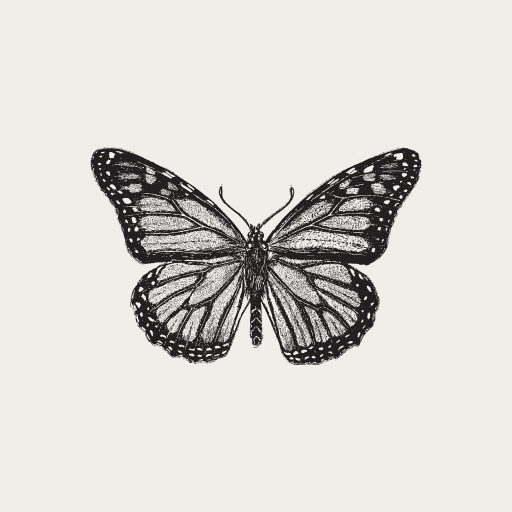How Choosing Native Plants Can Create Healthier Habitats for Bees, Butterflies, and Other Pollinators
Pollinators, those tiny creatures that flutter and buzz through our gardens and fields, play a much larger role in the ecosystem than we often realize. From the buzzing bees to the graceful butterflies, these hardworking insects are essential for biodiversity and food security. As a conservationist and artist, I often find myself in awe of the intricate connections between plants, pollinators, and the natural world we live in. However, our pollinators are facing a crisis, and it’s up to us to make a difference. One of the simplest and most powerful ways we can help is by choosing to plant native species in our gardens and communities.
The Importance of Pollinators in Ecosystems
Pollinators, which include bees, butterflies, hummingbirds, and other insects, are responsible for the reproduction of about 75% of flowering plants and 35% of global food crops. Without them, the world would be a very different place, lacking many of the fruits, vegetables, and flowers we rely on. These insects are an essential link in the food chain, providing vital services for both natural ecosystems and human agriculture.
Unfortunately, pollinators face numerous threats, from habitat loss and pesticide use to the effects of climate change. As their natural habitats continue to dwindle, it’s up to us to step in and create environments where pollinators can thrive.
What Makes Native Plants Unique
Native plants are those that naturally occur in a particular region, having adapted to the local climate, soil, and wildlife over thousands of years. Unlike non-native species, which often require extra care, fertilizers, and water, native plants are perfectly suited to their environment and provide the best possible support for local pollinators. This natural partnership is not just a coincidence; native plants and pollinators have evolved together, with specific species of bees, butterflies, and other insects depending on them for food and shelter.
Choosing native plants over exotic or non-native species is a small but meaningful act of conservation. By planting natives, we help restore balance to local ecosystems, providing pollinators with the resources they need to survive.
How Native Plants Benefit Pollinators
Native plants support pollinators in several critical ways:
- Nutritional Support: Many pollinators, especially bees and butterflies, rely on nectar and pollen as their primary food sources. Native plants are specifically tailored to the needs of local pollinators, offering rich, abundant nectar that is perfectly suited to their diet.
- Habitat Creation: Beyond just food, native plants also provide shelter for pollinators. Whether it’s a cozy patch of milkweed for monarch butterflies or a patch of clover for honeybees, native plants create a welcoming home for pollinators.
- Reduced Pesticide Use: Native plants are often more pest-resistant than their non-native counterparts, meaning they don’t require as many chemical treatments to stay healthy. This reduction in pesticide use is beneficial not only to pollinators but to the entire ecosystem.
Creating Pollinator-Friendly Habitats
If you’re looking to make a difference in the health of local pollinators, the good news is that it’s easier than you might think. Even if you have a small yard or balcony, you can create a thriving habitat for pollinators by planting native species. Here are a few tips:
- Choose a variety of native plants: Plant species that bloom at different times of the year to provide continuous food sources for pollinators.
- Consider plant height and structure: Tall sunflowers or prairie grasses offer shelter, while low-growing wildflowers provide easy access to nectar.
- Avoid pesticides: Use natural methods to control pests, allowing pollinators to flourish undisturbed.
By planting native species, you are not just beautifying your space; you are also contributing to the health and sustainability of your local ecosystem.
Incorporating Native Plants into Everyday Spaces
Creating a pollinator-friendly garden doesn’t require a large plot of land. Even in urban environments, small native plant gardens can make a huge difference. Community gardens, schoolyards, and even local parks can be transformed into vibrant, pollinator-friendly habitats.
From my own experience, I’ve seen how small steps—like planting a few wildflowers—can turn a barren patch into a buzzing haven for bees and butterflies. It’s an act of kindness, a gesture of support for the delicate balance of nature. And the best part? Anyone can do it.
A Call to Action for Pollinators: Small Steps, Big Impact
Choosing native plants is one of the simplest and most effective ways we can support pollinators and, in turn, protect the ecosystems that sustain us all. Each plant, each garden, each small act of care contributes to a healthier world. By embracing the beauty and wisdom of native plants, we help preserve the essential services pollinators provide. Together, we can create a world where bees and butterflies continue to thrive, and where nature’s delicate balance is restored.
As I reflect on the importance of pollinators, I’m reminded that we don’t have to wait for big, sweeping changes to make a difference. Every small action—whether it’s planting a few native flowers or educating others about the importance of pollinators—adds up to something much bigger. Our collective efforts have the power to create lasting change. Let’s take a deep breath, step forward with intention, and make a lasting impact on the world around us.

